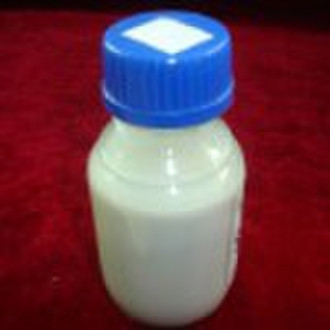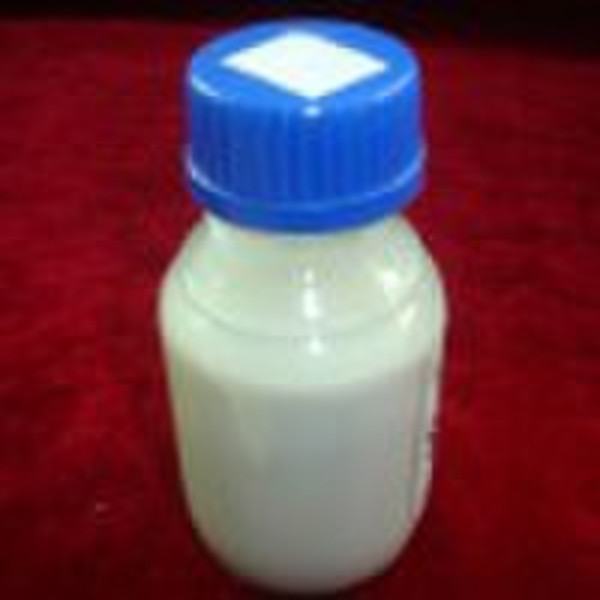spinosad 25G/L SC

Lucy Yu
联系人姓名
基本信息
| 国 | 液体 |
|---|---|
| 分类 | Insecticide |
| 化学文摘社编号. | 131929-60-7 (Spinosyn A |
| 出生地 | Henan China (Mainland) |
| 纯洁的 | 2.5 |
| 适用 | insecticide |
| 牌子的名字 | Labor |
Spinosad (spinosyn A and spinosyn D) is a new chemical class of insecticides to control a variety of insects. The active ingredient is derived from a naturally occurring soil dwelling bacterium called Saccharopolyspora spinosa, a rare actinomycete reportedly collected from soil in an abandoned rum distillery on a Caribbean Island in 1982 by a scientist on vacation . It has not been found in nature since that time, and was subsequently described as a new species. The bacteria produce compounds (metabolites) while in a fermentation broth. The first fermentation-derived compound was formulated in 1988. Spinosad has since been formulated into insecticides that combine the efficacy of a synthetic insecticide with the benefits of a biological pest control organism.Mode of actionSpinosad kills susceptible species by causing rapid excitation of the insect nervous system. Due to this unique mode of action, Spinosad is valued in resistance management programs. Spinosad must be ingested by the insect, therefore it has little effect on non-target predatory insects. It is highly effective used as an oral anti-flea medication for dogs, and apparently has the potential for killing any blood-sucking insect.Spinosad is relatively fast acting. The insect dies within 1 to 2 days after ingesting the active ingredient. There appears to be 100% mortality.UseSpinosad is the mixture of two naturally occurring metabolites (Spinosyn A and Spinosyn D) found in the fermentation juices of a soil bacterium called Saccharopolyspora Spinosa. It can be used to treat a wide variety of insects including: caterpillars, leafminers, thrips, spider mites, borers, fire ants and sod webworms. The insects ingest the Spinosad and are dead in 1-2 days. Any remaining Spinosad left in the environment will be broken down by sunlight and other microbes into carbon, hydrogen, oxygen and nitrogen. It is safe to use on any and all plants including fruits vegetables and other edibles such as herbs. Because it must be ingested, it can also be used in areas with beneficial insects like ladybugs, lacewings and predatory mites. I would however stay away form using it in and around butterfly gardens because it will kill the larval caterpillars. The most common use of Spinosad is for leafminers on citrus and other fruit and vegetable crops. You may never see a leafminer but you will definitely see their damage. It shows up on foliage as a shiny twisting and turning trail engraved in the leaves. It comes from a fly that will lay its eggs in the leaf and when the maggot hatches it tunnels its way out leaving that trail behind. This is in no way detrimental to the plant when only found on a few leaves, if it begins to cover it entirely you should start treatment. Spinosad can also be a big help to rose and gardenia growers in the fight against thrips. These pesky insects are responsible for the rapid destruction of blooms on these and other plants. Before the only option was to spray a harsh chemical that could potentially damage these sometimes fragile plants, but now you can use this safe and natural spray without worry. Finally a granule version of Spinosad has been developed for the use in lawns to control fire ants. The ants take the granules back to the mound and give it to the queen and in turn feed on it themselves. The ants are dead within 48 hours.SafetyIts "Caution" signal word indicates a reduced risk to applicators and workers. There are no specific worker protection requirements, even though applicators and handlers should wear a long-sleeved shirt, long pants, shoes and socks.ToxicitySpinosad shows low toxicity when ingested by mammals (male rat LD50 = 3738mg/kg) and no additional adverse effects from chronic exposure. Studies on spinosad show slight toxicity to birds, moderate toxicity to fish, and slight to moderate toxicity to aquatic invertebrates. However, it is highly toxic to bees (honey bee LC50 = 11.5 ppm) and is highly toxic to oysters and other marine mollusks. Applications to areas where bees are actively foraging should be avoided. After the residues have dried, it is much less toxic to bees.It is important to note that toxicity is based on the active ingredient tested; formulations of spinosad in common use today have a very small amount of spinosad active ingredient. In addition, non-target sensitivity is mitigated by the environmental characteristics of spinosad, including rapid dissipation in the water column, sorption and binding of residues with sediment and lack of bioaccumulation in living tissues.PhytotoxicitySpinosad does not have any phytotoxicity on ornamentals and is non-phytotoxic for most crops. It has a 4-hour Worker Protection Standard reentry interval (REI).Do not apply Spinosad more than 10 times in a 12 month period inside a greenhouse to prevent possible insect pesticide resistance
交货条款及包装
Packaging Detail: 200L/drum or by customers' request Delivery Detail: within 15--20days upon receivingoriginal sight L/C or payment
端口: China main port
付款条款
Letter of credit
Telegraphic transfer
-
支付方式
我们接受:









